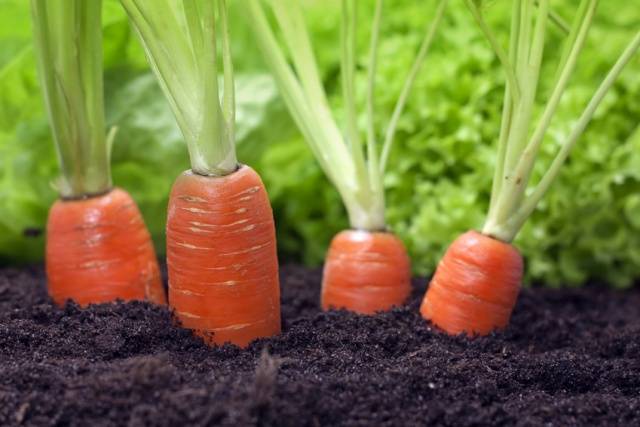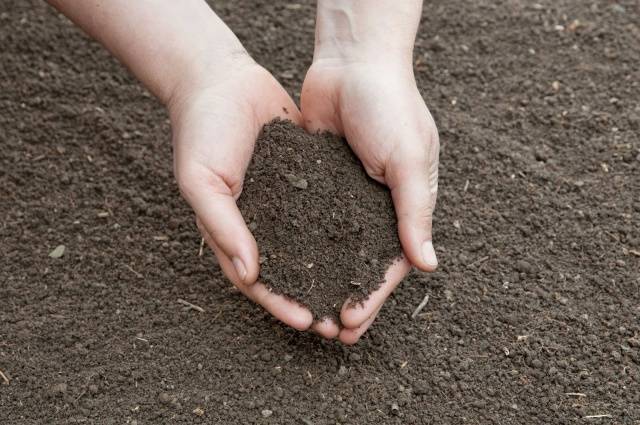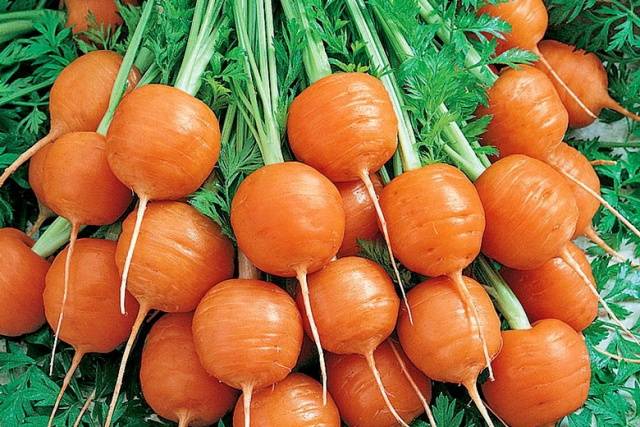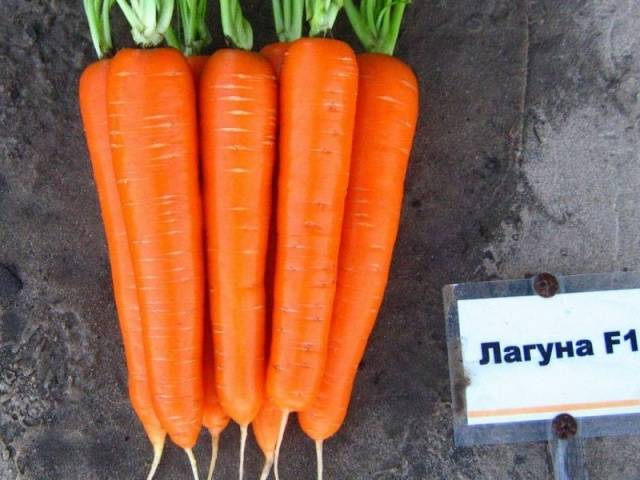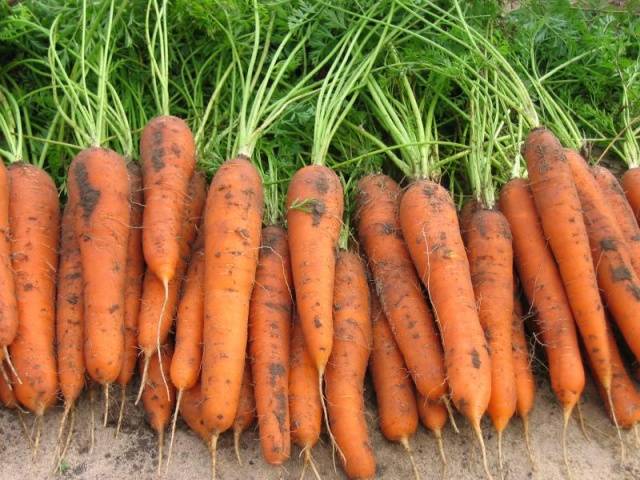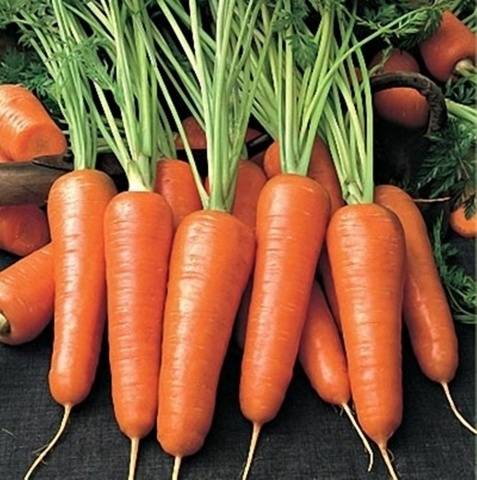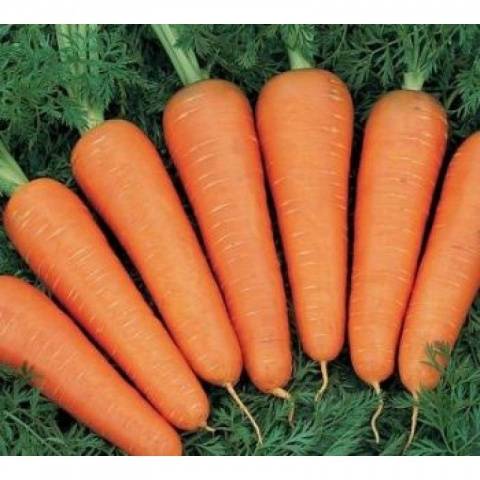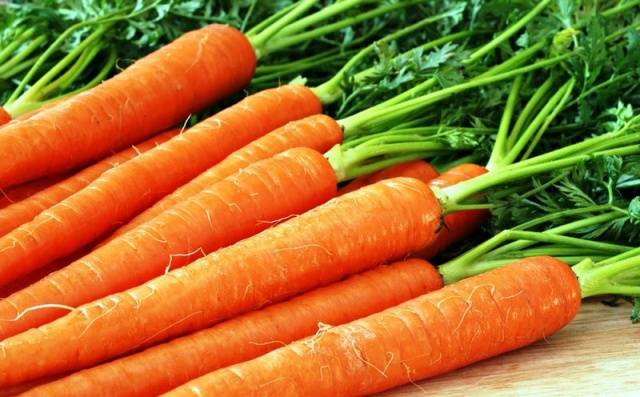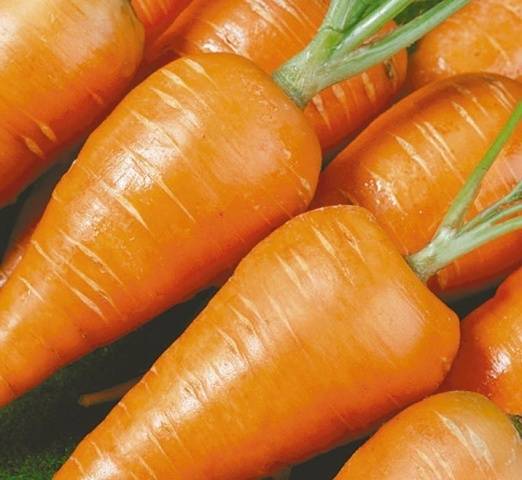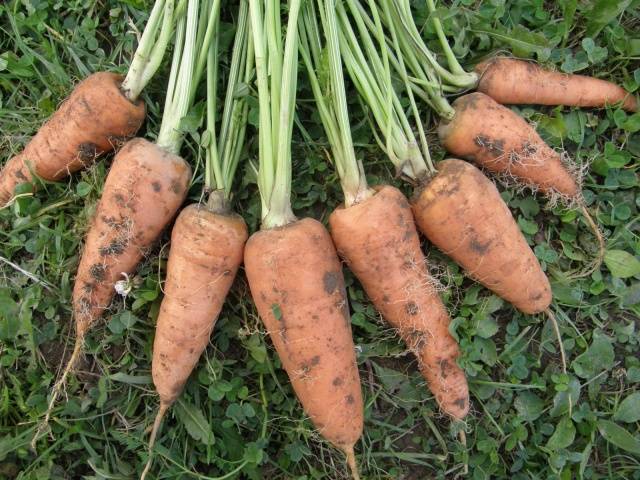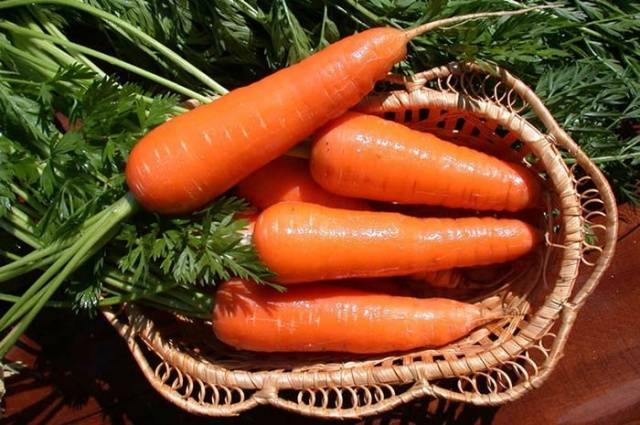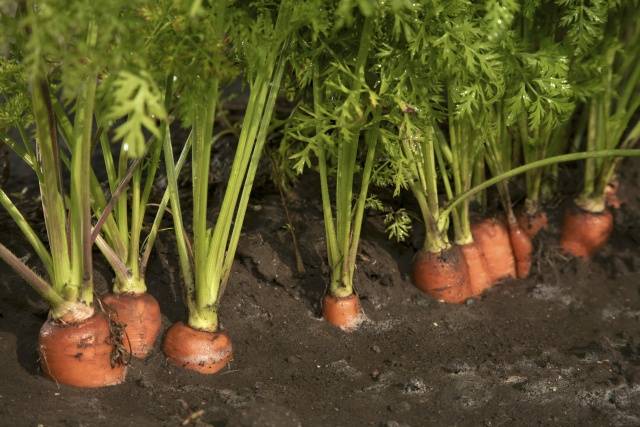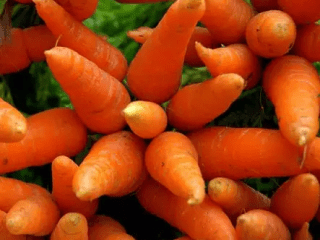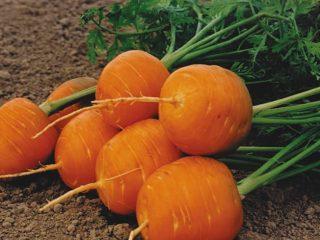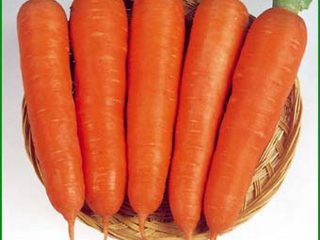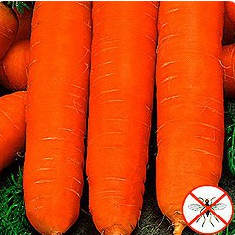Content
Rarely does a garden plot exist without a ridge on which the popular root vegetable grows. Early short-fruited varieties for children's treats and late-fruited ones for long-term storage and as a mandatory component of conservation. The best carrot varieties for the Moscow region are also suitable for central Russia and southern Siberia in terms of growing season and weather conditions.
Improving the soil
The soils of the Moscow region need improvement: they are depleted and acidic. Predominantly podzolic and soddy-podzolic soils are widespread. Regular liming is required after 5–10 years, deoxidizer application rates are 0.4–1 kg/m2. Podzols need more attention, otherwise the yield of root crops and quality will not be up to par.
The fertile humus-humus horizon is thin and increases in the southern regions, turning into black soil. Applying manure, humus and compost every 3-4 years will enrich the soil and reduce the density of the fertile layer. Mineral fertilizers are applied annually during autumn digging and as top dressing.It is recommended to gradually deepen the arable layer to 28 cm with the addition of sand to reduce density and increase aeration for better development of carrot fruits.
Early varieties of carrots for the Moscow region
Carotel Parisian
The favorite carrot variety of caring grandmothers. A fast-growing, long-standing variety of carrots is harvested in July. In terms of taste, it is a classic Karotel of a modified form. Spherical root vegetables, similar in roundness to radishes, are filled with juice, carotene and sugars. The yield of the variety is low - 3 kg/m2, but the grandchildren are so much joy!
Varieties Karotel Parisian and Parmex are early-growing carrot varieties that do not require deep digging. The weight of root crops is up to 50 g, the diameter is no more than 4 cm. These varieties grow and bear fruit on heavy soils with a thin fertile layer. It is enough to walk along the predecessor ridge with a hoe to loosen the soil by 5–7 cm. Form the sides, the ridge is ready for sowing.
Harvest mini carrots is not put into storage. Used fresh or whole root vegetables canned. Excess fruit is processed into carrot juice.
Lagoon F1
In terms of taste, Laguna carrots are close to the ancestor of the variety. Sugary, carotene-rich, bright orange cylindrical root crops 17–20 cm long with a miniature core are capable of producing high yields.
Selective harvesting of young carrots begins 2 months from the date of sowing. Mass harvest of root crops - after 3 weeks. The harvest from autumn and early spring sowing (soil temperature +5) is processed. For long-term storage of the crop, the seeds are sown in soil heated to 12–15 degrees. The variety is not prone to overgrowth or cracking.
Preferred soils are clay-sandy and peat.Heavy soils must be improved by adding sand and peat, otherwise seedlings will be rare. The acidity of the soil is preferably neutral: pH 6.0–6.5. Flooded low-lying areas are unsuitable.
Sowing carrots on the same ridge is acceptable after 3 years. In crop rotation, the preferred predecessors are:
- Cabbage;
- Tomatoes;
- Cucumbers;
- Onion;
- Legumes.
Refrain from sowing carrots next year immediately after root vegetables:
- Potatoes;
- Beetroot;
- Parsley;
- Celery.
Phosphorus and potassium fertilizers are applied during autumn digging of the soil. Agronomists advise avoiding the application of potassium sulfate - during the sprouting period of carrots, the acidity of the soil will increase. Nitrogen fertilizers are applied before sowing. Fertilizing with aqueous solutions of fertilizers is carried out during the growing season. Fresh manure is not applied to carrot beds in the fall. Fertilizing with infusions of mullein and bird droppings is effective and desirable for increasing yield.
The depth of tillage affects the yield and marketable qualities of root crops: deep digging will reward you with long, even, smooth carrot roots. Ukrainian vegetable growers offer a ridge method of growing carrots
Lagoon with increased row spacing. This method is also suitable for farms with mechanized fruit harvesting. To speed up germination, sowing carrots under film is practiced.
When purchasing seeds, pay attention to the inscription on the package about complex seed treatment. Disinfection with manganese acid potassium destroys only the existing microflora and will not protect carrot seeds in the soil.
Carrot roots that are planned to be stored in the cellar should not be dried for a long time - the shelf life is reduced. Optimal fetal preservation is 2–3 months.
| Keeping quality | Up to 3 months |
|---|---|
| Root weight | 120–165 g |
| Ripening time from the day of sowing | 80–85 days (per bundle), 100 days for storage |
| Diseases | Powdery mildew, Alternaria |
| Pests | Carrot fly, moth |
| Productivity | 5–7 kg/m2 (up to 10 kg/m2) |
Alenka
A productive, large-fruited, high-yielding variety does not require hilling - the root crops are completely immersed in the soil. The blunt-ended conical root crops compete with the famous Karotel in terms of sugar and carotene content. The fruits, resistant to cracking and overgrowth, are not elongated, but the depth of cultivation of the ridge affects the yield.
Short-fruited carrots Alenka on dense podzolic soils of the Moscow region, it will not reduce the yield if raising agents: sand and ash are added to the ridge. A proven method of deep autumn digging over an artificially filled layer of pine needles or foliage is effective in increasing the air permeability of the soil. Carrots of the Alenka variety are demanding when it comes to watering.
The variety is resistant to diseases and pests, if the ridge is not overgrown with weeds, the plantings are not thickened, and loosening and weeding are carried out in a timely manner. The carrot fly runs rampant in waterlogged, weedy areas. A sign of plant damage is curled tops. The drugs Actellik and Intavir are effective against the pest. Treatment with a one percent solution of Bordeaux mixture will protect plantings against formosa and alternaria.
| Root weight | 120–150 g |
|---|---|
| Fruit size | 14–16 cm length, 4–7 cm diameter |
| Keeping quality | Long-term storage |
| Sowing grid | 4x15 cm |
| Precocity | 110 days from sowing |
| Productivity | Up to 10 kg/m2 |
| Growing conditions | Deep tillage, light aerated soils |
Mid-season carrot varieties for the Moscow region
Vitamin 6
Carrot Vitamin 6 It is naturally considered one of the most delicious varieties. Brought out in 1969 on the basis of the Nantes and Berlicum varieties. Reaches technical ripeness within 100 days from the moment of sowing the seeds. Cylindrical, blunt-ended root crops partially emerge to the surface of the ridge; if this becomes widespread, there is a need for hilling so that they do not turn green.
The length of the red-orange fruits reaches 20 cm, are not prone to curvature, weighing 80–160 g, the surface is smooth. The core is thin, faceted, dense. The variety is resistant to flowering and fruit cracking; the roots are suitable for long-term storage. The shelf life of chalk-powdered fruits is up to 8 months.
Sowing for early harvesting is carried out in late autumn or early spring when the top layer of soil reaches a temperature of +5 degrees. In the spring, the seeds are soaked, in the fall - not. Seed germination is 85%. Mulching the ridge and covering it in arcs with lutrasil accelerates germination and prevents the appearance of a crust on the surface of the ridge.
Winter carrots are larger than spring carrots, but are only suitable for processing. For storage, carrots are sown in May, when the soil warms up to +15 degrees. Moderate watering is carried out less frequently as the root crops increase. An hour after watering, moisture should penetrate to the depth of the tip of the carrot.
As a protective measure against carrot flies, the ridge is planted marigolds and pollinated with wood ash. Long-term storage is carried out at air temperature +1–5 degrees, humidity 80–90%.
| Root weight | 80–160 g |
|---|---|
| Root size | 15–18 cm length, 4–5 cm diameter |
| Sowing grid | 4x20 cm |
| Productivity | 4–10.5 kg/m2 |
| Spring sowing | May 1–15 |
| Cleaning | Aug. Sept |
| Keeping quality | Up to 8 months |
Moscow winter A-515
The Moscow winter carrot variety bears fruit well in the Moscow region. You will achieve an early harvest by sowing seeds at the end of October, beginning of November, while the air temperature is still above zero and the weather forecast does not promise thaws, so that germination does not begin. The surface of the ridge should be compacted, preventing the seeds from being washed away by spring waters.
In April, after the top layer of soil has warmed to +5 degrees, the seeds will begin to grow. Melt water stimulates growth. Covering material laid on the ridge in the fall will reduce the waiting time for the root crop harvest by 1.5–2 weeks. Winter and early spring sowing is suitable for processing. The harvest of root crops sown in mid-May is stored for long-term storage. Seed germination rate is 90%. The seedlings can safely tolerate night frosts down to -4 degrees.
After 3 months from the date of sowing, the crop is ready for harvesting. Ripe root crops up to 20 cm long are orange in color with an abundance of filamentous roots on the sides and are completely hidden underground; the upper part does not turn green. The fruits are heavy, up to 180 g, long-lasting - if properly stored in the basement at a temperature of +1–5 degrees and humidity up to 90%, they do not lose their marketable quality for up to 9 months.
Moscow winter carrots give good results after tomatoes, pumpkin, and onions. Root vegetables are not suitable as predecessors. Deep digging of the soil and loosening of podzolic soils by adding sand and ash improves the quality of root crops and the yield of the variety.
| Weight of root vegetables | 100–170 g |
|---|---|
| Root sizes | 16–18 cm length, 4–5 cm diameter |
| Productivity | 5–7 kg/m2 |
| Keeping quality | Up to 9 months |
| Nutrient content | Proteins 1.3%, carbohydrates 7% |
Late-ripening carrot varieties for the Moscow region
Moscow late
Late-ripening varieties are more suitable for long-term storage.And in terms of accumulation of useful substances, early and mid-ripening ones are superior: with the same time for germination - up to three weeks, the growing season lasts a month longer. Late Moscow variety carrots are ready for harvesting 145 days after sowing.
In regions with a temperate climate, such as the Moscow region, it is not customary to plant late Moscow carrots in early spring. Pre-winter sowing is practiced by covering the ridge with spruce branches and bunches of cut raspberry stems to retain snow and prevent the blowing out of seeds.
In spring, the ridges are sown no earlier than May. Conical, blunt-pointed bright orange root crops up to 20 cm long and weighing 0.2 kg in September will yield a yield of 6.5 kg/m2, and sowing at the end of October in August will give up to 10 kg/m2
Conclusion
Carrots are a vegetable with which, in soil with a scanty fertile layer, in unfavorable summers you will never be left without a significant harvest.
How to grow a good carrot crop:
